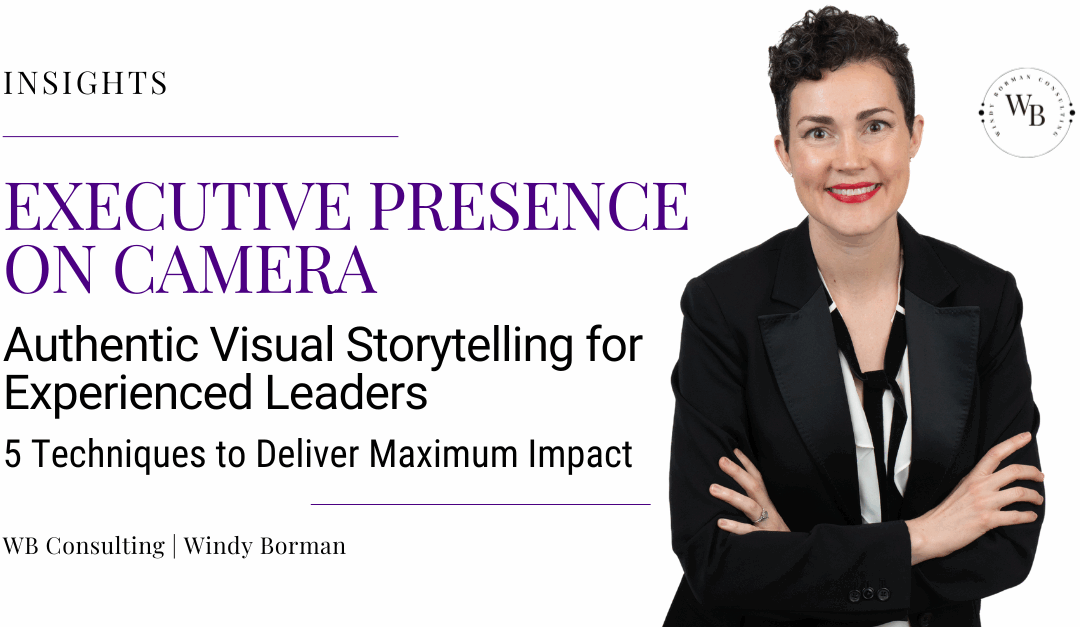When you’ve built a successful company and led a team through growth milestones, the last thing you need is anxiety about how you’ll be perceived on camera. Yet for many experienced leaders—especially women—this is exactly what happens when media opportunities arise.
The stakes feel different. The scrutiny is real. And the familiar pressure returns: be authentic but not too vulnerable, authoritative but not intimidating, polished but not overly produced.
After two decades producing content for thought leaders (including work with Sir Richard Branson, Ashley Judd, and Melissa Etheridge), I’ve learned that executive visual storytelling isn’t about perfection—it’s about intentional presence that honors both your expertise and humanity.
Visual Storytelling Tips for Leaders with Limited Time
1. Lead with your “why,” not your title
Begin with the purpose behind your work rather than credentials. This immediately differentiates you from the countless “experts” online and creates an emotional connection that transcends industry jargon.
2. Embrace strategic imperfection
Contrary to conventional wisdom, slight imperfections (a candid moment, genuine laughter, thoughtful pause) make you more relatable without undermining authority. The key is discerning which “imperfections” humanize versus those that distract.
3. Use visual anchors that reinforce your message
Your environment, wardrobe, and visual cues should align with your strategic positioning. In cinema, we call this the “mise-en-scène“. This isn’t superficial—it’s ensuring every element of your visual narrative supports your core message.
4. Master the “confident pause”
The most compelling speakers understand that power lies in strategic silence. Let important points land. A confident pause demonstrates executive presence more than rapid-fire delivery.
5. Optimize for both sound-on and sound-off viewing
Great video content works with or without audio. Ensure your visual storytelling carries your message even when viewers aren’t listening—because often, they aren’t.
Recently, I worked with a tech founder who was brilliant on paper but anxious on camera. By focusing on these principles rather than rigid “media training” rules, we transformed her presence into one that conveyed both her technical expertise and authentic leadership style. The result? Her series of thought leadership videos directly led to strategic partnerships that accelerated her company’s growth.
Your time is valuable, and your expertise is earned. Your story deserves to be told in a way that respects both.
Ready to transform your on-camera presence into a strategic business asset?
Let’s talk about your upcoming media opportunities and how we can ensure they deliver real results, not just visibility. Book a Discovery Call and let’s discuss your vision.
How has your on-camera presence evolved as your company has grown? What challenges have you faced in balancing authenticity with authority? Share your thoughts.


